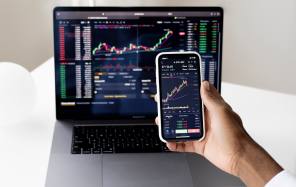

A growing sense of ‘opportunity cost’ among investors could be behind a surprise fall in the value of gold, after the precious metal failed to live up to its status as an inflation hedge and safe asset.
The commodity, traditionally regarded as a safe haven for skittish investors, was among those assets viewed as a potential winner in a year marked by significant market shocks and rising inflation expectations – which many now predict during a stimulus-happy Donald Trump presidency.
This sentiment, however, is yet to be borne out by the price of the precious metal. While other hedges such as inflation-linked bonds have performed relatively well, gold has been trending downwards, both in the months leading up to the US election and its aftermath.
Investors have been left seeking the rationale for such downwards moves. The strength of the dollar, which tends to move inversely to the price of bullion, has been listed as one reason.
However, Chris Darbyshire, chief investment officer at Seven Investment Management, noted the shift had been “strange” and could reflect the fact that investors had decided to chase rallying markets, having initially held gold for protection.
“It looks like investors in gold were holding it in case Trump got elected and the markets went into meltdown,” he said.
“This reasoning, which no longer applies now markets actually like Trump, seems to have dominated the conventional wisdom that gold is held as an inflation hedge, indicating that the principal holders of gold have been equity, rather than bond, holders.”
Ben Seager-Scott, Tilney Bestinvest’s director of investment strategy, added that the metal fell victim to volatility as observers attempted to “digest the ramifications” following Mr Trump’s win.
“Post-election we’ve seen an equity rally, and many investors may have been tempted to sell down their gold positions to join in with the rush.”
While certain assets still look threatened, equity markets have remained robust since the election outcome. The S&P 500 gained 2 per cent in the week since 9 November, when many expected a fall.
Another factor at play may have been bond yields, which initially rose at the long end of the curve in the US after Mr Trump’s election as investors retreated.
However, James de Bunsen, a fund manager in Henderson’s multi-asset team, said while some investors were selling out of bonds, the additional income now on offer from rising bond yields also meant it increased the opportunity cost of holding gold for others.
“Bond yields have gone up, but they were in a ridiculous place,” he said. “In absolute terms, yields are not that high. But the problem is, there is an opportunity cost to holding gold, because it gives you no income.”
However he and others have defended the use of gold in portfolios, citing difficult times ahead. “I would strongly argue that geopolitical risks are extremely likely, as amply demonstrated by the Italian referendum in December,” Mr de Bunsen noted.
Patrick Schotanus, an investment strategist for Kames Capital, reiterated the usefulness of gold in unpredictable times.
“Overall, gold should be viewed as an alternative currency, specifically a hedge against ‘fiat’ currencies,” he explained. “The latter are threatened in systemic crises situations.
“Assuming one cannot time these, gold should be a strategic holding in an multi-currency/asset portfolio, albeit with regular tactical rebalancing.”
Key numbers
3.7%
Rise of the US dollar against the Japanese Yen in the week since November 9
2%
Rise in the S&P 500 over the same period



